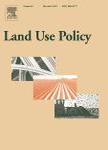版权所有:内蒙古大学图书馆 技术提供:维普资讯• 智图
内蒙古自治区呼和浩特市赛罕区大学西街235号 邮编: 010021

作者机构:Univ Edinburgh Sch Geosci Grant Inst Kings BldgWest Mains Rd Edinburgh EH9 3JW Midlothian Scotland SRUC Land Econ Environm & Soc Grp Kings BldgWest Mains Rd Edinburgh EH9 3JW Midlothian Scotland Biovers Int Via Tre Denari 472-A I-00057 Rome Italy Univ Birmingham Sch Biosci Birmingham B15 2TT W Midlands England Zambian Agr Res Inst Mt Makulu Cent Res Stn Chilanga Zambia Univ Edinburgh Global Acad Agr & Food Secur Easter Bush Campus Edinburgh EH25 9RG Midlothian Scotland
出 版 物:《LAND USE POLICY》 (土地利用政策)
年 卷 期:2019年第81卷
页 面:632-643页
核心收录:
学科分类:0830[工学-环境科学与工程(可授工学、理学、农学学位)] 0828[工学-农业工程] 08[工学]
基 金:Natural Environment Research Council (NERC) E3 Doctoral Training Programme (DTP) studentship [NE/L002558/1] European Union ACP-EU Co-operation Programme in Science and Technology (S&T) II by the African, Caribbean and Pacific (ACP) Group of States [FED/2013/330-210]
主 题:Crop wild relatives Zambia Competitive tender Binary linear programming Payments for ecosystem services Social equity Payments for agrobiodiversity conservation services
摘 要:Crop wild relatives (CWR) are a globally threatened group of plants, harbouring valuable genes that are sometimes used to enhance commercial crop varieties and landraces. A lack of recognition in national planning for biodiversity conservation has resulted in inadequate CWR conservation strategies, particularly in situ. There is little information on in situ conservation costs, and this paper uses a payment for agrobiodiversity conservation services (PACS) approach to estimate the in situ costs of conserving CWR in Zambia, where 30 CWR have been prioritised for conservation (of which nine are present in our sample). Competitive tender bid offers were elicited from farmers willing to accept compensation for providing a CWR conservation service. Using data from 26 communities we determined the on-farm cost of conserving CWR, specifically in field margins/borders. Heterogeneity was evident in farmer bid offers, suggesting discriminatory price mechanisms can potentially deliver cost savings over uniform payment rules. Selection of bid offers under four different conservation goals using a binary linear programming (BLP) model reveals conservation costs ranging from US$ 23 to 91/ha per year. An untargeted area goal provided a least-cost procurement of conservation services ($ 2.3 k per year), followed by a targeted area goal ($ 5.9 k per year). The cost of selecting conservation sites increased when other constraints were added to the BLP model, including those concerning social equity ($ 6.4 k per year), and diversity ($ 9.2 k per year) goals. Overall, the findings suggest the use of competitive tenders, coupled with CWR data and BLP modelling, can potentially add much to improve the efficiency of in situ CWR conservation.